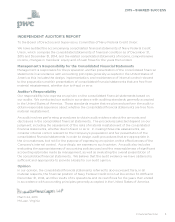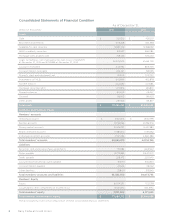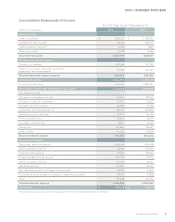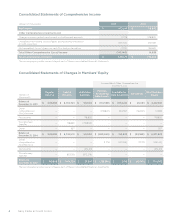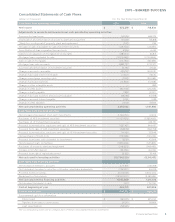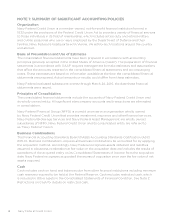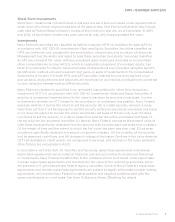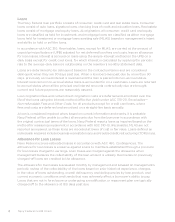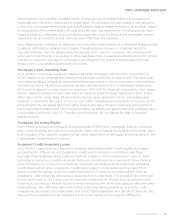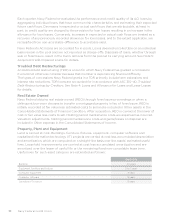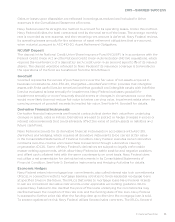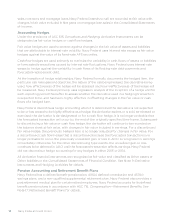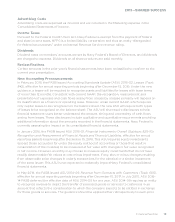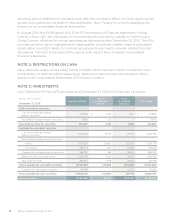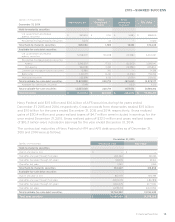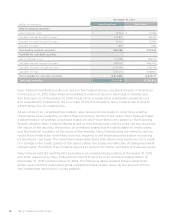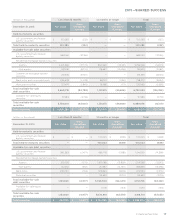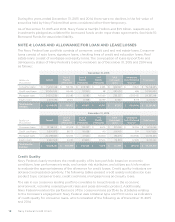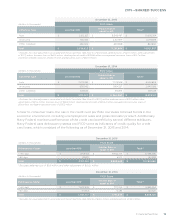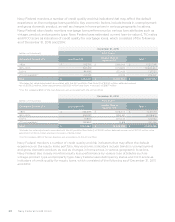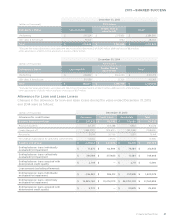Navy Federal Credit Union 2015 Annual Report Download - page 30
Download and view the complete annual report
Please find page 30 of the 2015 Navy Federal Credit Union annual report below. You can navigate through the pages in the report by either clicking on the pages listed below, or by using the keyword search tool below to find specific information within the annual report.Financial Section 11
2015—SHARED SUCCESS
Gains or losses upon disposition are reflected in earnings as realized and included in Other
expenses in the Consolidated Statement of Income.
Navy Federal uses the straight-line method to account for its operating leases. Under this method,
Navy Federal divides the total contractual rent by the total term of the lease. The average monthly
rent is recorded as rent expense, and the remaining rent amount is deferred. Navy Federal reviews
its operating leases annually for the existence of asset retirement obligations that are accrued,
when material, pursuant to ASC 410-20, Asset Retirement Obligations.
NCUSIF Deposit
The deposit in the National Credit Union Share Insurance Fund (NCUSIF) is in accordance with the
Federal Credit Union Act and the National Credit Union Administration (NCUA) regulations, which
requires the maintenance of a deposit by each credit union in an amount equal to 1% of its insured
shares. The deposit would be refunded to Navy Federal if its insurance coverage is terminated or
the operations of the fund are transferred from the NCUA Board.
Goodwill
Goodwill represents the excess of purchase price over the fair value of net assets acquired in
business combinations. ASC 350-20, Intangibles—Goodwill and Other, provides that intangible
assets with finite useful lives be amortized and that goodwill and intangible assets with indefinite
lives be evaluated at least annually for impairment. Navy Federal evaluates goodwill for
impairment annually or more frequently should events or changes in circumstances occur that
would more likely than not reduce fair value to below carrying value. Impairment exists when the
carrying amount of goodwill exceeds its implied fair value. See Note 14: Goodwill for details.
Derivative Financial Instruments
Derivative financial instruments are financial contracts that derive their value from underlying
changes in assets, rates or indices. Derivatives are used to protect or hedge changes in prices or
interest rate movements that could adversely aect the value of certain assets or liabilities and
future cash flows.
Navy Federal accounts for its derivative financial instruments in accordance with ASC 815,
Derivatives and Hedging, which requires all derivative instruments to be carried at fair value
in the Consolidated Statements of Financial Condition. Navy Federal executes certain derivative
contracts over-the-counter and clears these transactions through a derivative clearing
organization (DCO). Some of Navy Federal’s derivatives are subject to legally enforceable
master netting agreements, which allow Navy Federal to settle positive and negative positions
and oset cash collateral held with the same counterparty on a net basis. Navy Federal does
not utilize a net presentation for derivative instruments in its Consolidated Statements of
Financial Condition. See Note 9: Derivative Instruments and Hedging Activities for details.
Economic Hedges
Navy Federal enters into mortgage loan commitments, also called interest rate lock commitments
(IRLCs), in connection with its mortgage banking activities to fund residential mortgage loans
at specified times in the future. The IRLCs that relate to mortgage loans Navy Federal intends
to sell are considered derivative instruments under applicable accounting guidance. IRLCs
expose Navy Federal to the risk that the price of the loans underlying the commitments may
decline between the inception of the rate lock and the funding date of the loan. Navy Federal
is exposed to further price risk after the funding date up to the time the mortgage loan is sold.
To protect against price risk, Navy Federal utilizes forward sales contracts. The IRLCs, forward


